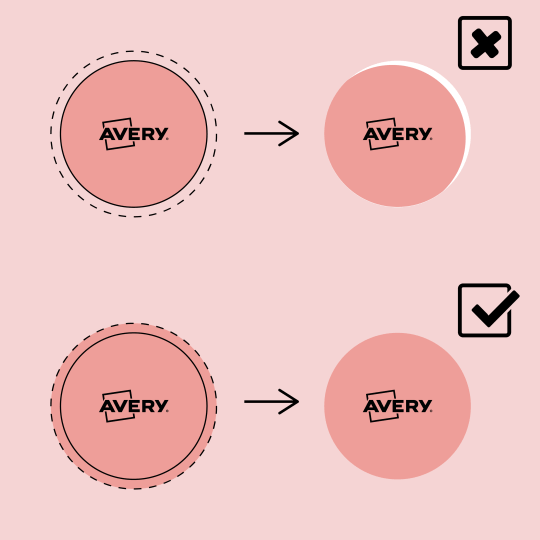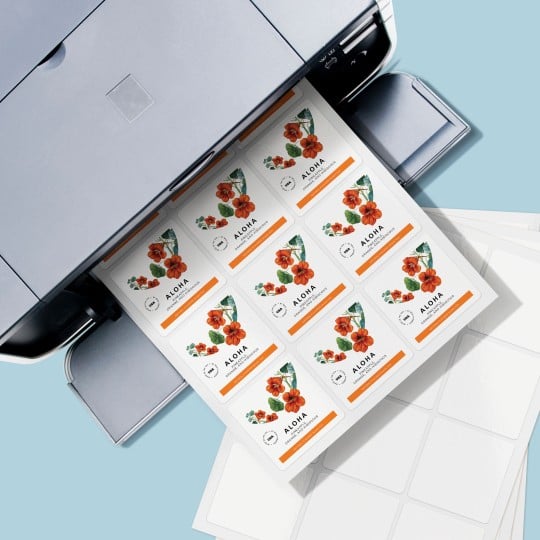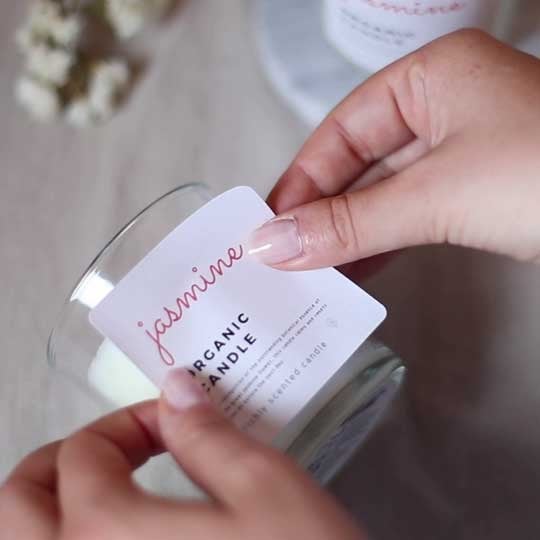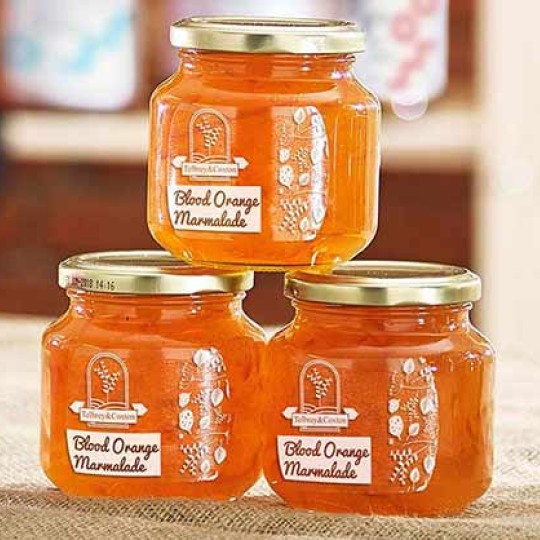RGB or CMYK: what colour profile should I use for my label design?
Everything you need to know about printing colours on labels
We accept both RGB and CMYK colour palettes, however, we highly recommend CMYK for the best printing results. Files submitted in RGB will be converted in-house to CMYK but the colour match may not be what you anticipated.
If you understood what you just read, enjoy designing! If that sounded more like a foreign language you don’t speak, keep reading, we’ll explain everything as simply as we can so you can create the best custom stickers.
What is the difference between RGB, CMYK and PMS?

RGB, CMYK and PMS are universal colour profiles that can define a large palette of colours with unique codes. In plain English, they're different types of colours used in different ways.
RGB is colour made for screens. It's the main colour profile for light-based technology such as computer monitors, mobile devices and TV screens.
- It stands for Red, Green and Blue
- It is an “additive” process: when you mix fully saturated versions of all 3 colours (red, green and blue) together, you get pure white, and when you remove all 3 colours completely, you get black.
- The values for R, G and B range from 0 to 255 (e.g. Avery dark blue is R:0 G:57 B:166)
- RGB can also be expressed as a hex code (e.g. Avery dark blue is #203982).
- The colours look bright on screen because they are illuminated but once printed, they can appear dull or faded
CMYK is colour for printing. It is the industry-standard profile for printed materials, that's why we recommend it!
- It stands for Cyan, Magenta, Yellow and Key (the ‘key’ colour is black – because ‘B’ would be too simple)
- It is a subtractive process: tiny transparent dots of 4 inks (you guessed: cyan, magenta, yellow and black) overlap to partially or entirely mask the light that would have been otherwise reflected. Simply put the 4 colours go together to create all other colours.
- The values for C, M, Y and K range from 0% to 100% (e.g. Avery dark blue is C:100 M:85 Y:10 K:5)
- When you buy ink for your personal printer the cartridges (inkjet) or toners (laser) are cyan, magenta, yellow, and black. That’s the same for the professional digital press we use to create our printed labels and stickers. This is why providing colours in a CMYK profile produces truer, more accurate colour matching than RGB for printing
PMS is used for offset printing only
- It stands for Pantone® Matching System, which is patented by the Pantone company
- Colours are identified by a unique code (e.g. Avery dark blue is Pantone 286 C)
- Pantone ink is one solid colour: it ensures colour consistency across different print products and across the globe which is why is used by most brands to define their official colour palette.
- Now you probably wonder why we are not using Pantone® for our print service… It can be used for offset printing which requires high volumes. We use digital printing to offer thousands of labels formats in small quantities.

How to design my labels using CMYK?
-
If you are using our software Avery Design & Print Online, go ahead and design it'll automatically convert to CMYK, this applies to images uploaded too.
-
If you are using another design program: RGB is usually set as default so make sure you change the colour settings to CMYK before you begin designing. You should have the option when creating a new file.
-
If you are working with a graphic designer: let them know your design will be printed and that you need it in CMYK.
-
If you have a Pantone reference, you can convert it to the closed CMYK and RGB colour reference using the official Pantone tool or other online free converters.
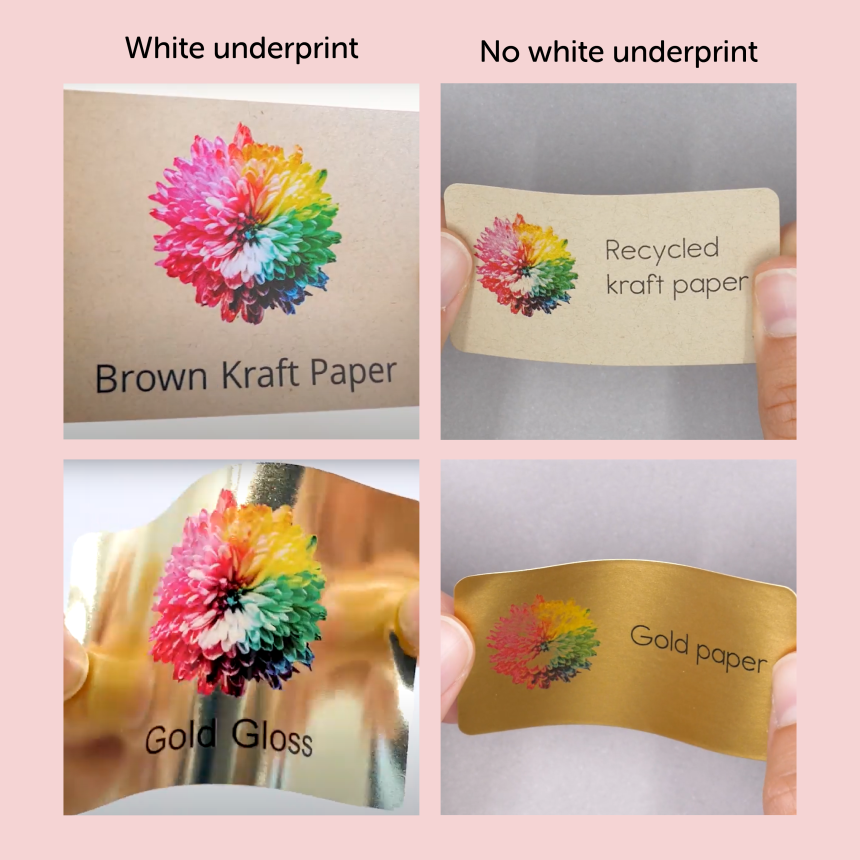
How will colours look on non-white label materials?
If you are using our print service, we use a professional digital press that lays down a white underprint on clear and coloured label materials such as kraft, gold, silver. We first print a white layer where your design will be printed, then we add the CMYK colours. This ensures that the colours really pop!
If you are printing blank label sheets, you won’t be able to print white ink as home and office printers don't have white ink. The colours can look a bit washed out compared to what you had in mind. These materials work well with dark colour designs. If you want brighter colours, we recommend using our print service.
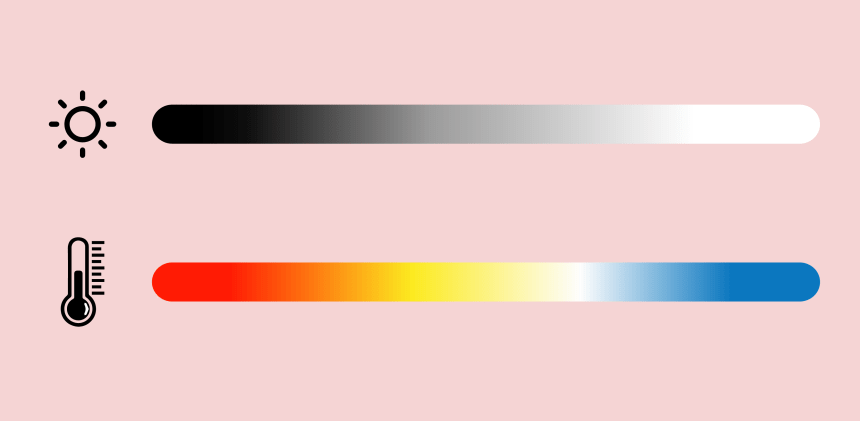
Why are the colours different on my screen?
Colours on your screen are illuminated which make them look brighter than what can be printed. Your screen brightness and temperature levels also affect colour perception.
If you want to test the colour, we recommend placing a minimum order of labels first (starting at £12).
Summary: what colour profile should I use for label printing ?
-
We accept both RGB and CMYK colour palettes but CMYK is better for printing
-
RGB is used for digital and web, CMYK is used for printing and PMS is used for offset printing
-
Our print service uses white underprint on clear and coloured materials to make colours stand out as expected, whereas inkjet and laser printers can’t print white, so colours will look a bit duller.
-
Remember that colours will always look brighter on your screen and that your screen brightness and temperature can affect your perception of colours


